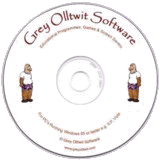
About Us
ADD/ADHD News
ADD/ADHD Books
ADDerwards
Creative ADDers
Donate
Events
GO Games
Information
Links
Natural Remedies
Research
Resources
Support Groups
Whats New
ADHD SOFTWARE
FREE DVD or CD

ADD/ADHD Online Information
ADD/ADHD Information
Indications of Dyslexia
If a child has several of these indications, further investigation should be made. The child may be dyslexic, or there may be other reasons. This is not a checklist.
1. Persisting factors.
There are many persisting factors in dyslexia,which can appear from an early age. They will still be noticeable when the dyslexic child leaves school.
These include:
Obvious 'good' and 'bad' days, for no apparent reason,
Confusion between directional words, e.g. up/down, in/out,
Difficulty with sequence, e.g. coloured bead sequence,later with days of the week or numbers,
A family history of dyslexia/reading difficulties.
2. Pre-school.
Has persistent jumbled phrases, e.g. 'cobbler's club' for 'toddler's club'
Use of substitute words e.g. 'lampshade' for 'lamppost'.
Inability to remember the label for known objects, e.g. 'table, chair'.
Difficulty learning nursery rhymes and rhyming words, e.g. 'cat, mat, sat'.
Later than expected speech development.
Non-language indicators.
May have walked early but did not crawl - was a 'bottom shuffler' or 'tummy wriggler'.
Persistent difficulties in getting dressed efficiently and putting shoes on the correct feet.
Enjoys being read to but shows no interest in letters or words.
Is often accused of not listening or paying attention.
Excessive tripping, bumping into things and falling over.
Difficulty with catching, kicking or throwing a ball; with hopping and/or skipping.
Difficulty with clapping a simple rhythm.
3. Primary school age.
Has particular difficulty with reading and spelling.
Puts letters and figures the wrong way round.
Has difficulty remembering tables, alphabet, formulae etc.
Leaves letters out of words or puts them in the wrong order.
Still occasionally confuses 'b' and 'd' and words such as 'no/on'.
Still needs to use fingers or marks on paper to make simple calculations.
Poor concentration.
Has problems understanding what he/she has read.
Takes longer than average to do written work.
Problems processing language at speed.
Non-language indicators:
Has difficulty with tying shoe laces, tie, dressing.
Has difficulty telling left from right, order of days of the week,months of the year etc.
Surprises you because in other ways he/she is bright and alert.
Has a poor sense of direction and still confuses left and right.
Lacks confidence and has a poor self image.
4. 12 or over.
As for primary schools, plus:
Still reads inaccurately.
Still has difficulties in spelling.
Needs to have instructions and telephone numbers repeated.
Gets 'tied up' using long words, e.g. 'preliminary', 'philosophical'.
Confuses places, times, dates.
Has difficulty with planning and writing essays.
Has difficulty processing complex language or long series of instructions at speed.
Non-language indicators:
Has poor confidence and self-esteem.
Has areas of strength as well as weakness
© adders.org 2004
Back to Information
Home About Us ADD/ADHD News ADDerwards Advertising Books Contact Us Creative ADDers Donate
Events Forums Information Links Natural Remedies ADDers.org News Research Resources Search adders.org
Site Map Social Stories Sponsor Events Student/Researchers Support Groups Supporters
Join us on....

ADHD SOFTWARE
FREE DVD or CD
